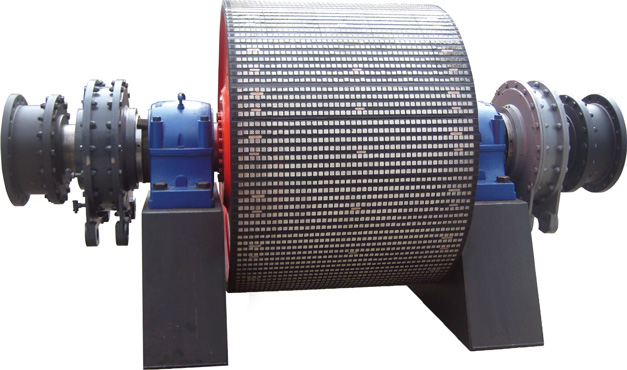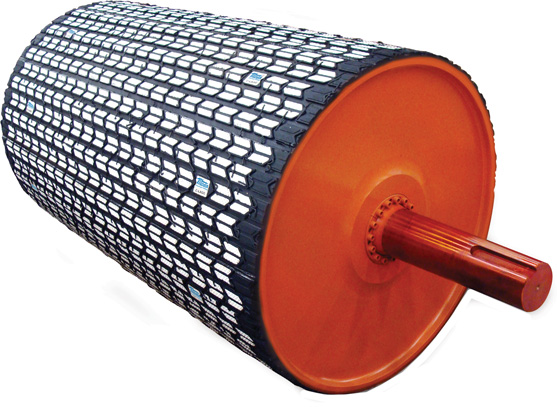Hot vulcanized ceramic lagging offers improved, lasting pulley protection against abuse of abrasive materials, corroding effects of moisture
For conveying systems operating in harsh environments, wear is inevitable. By investing in the right protection, you can prevent that wear from damaging the system’s major components, which can rack up costs in both replacement and downtime.
Lagging is the coating or cover applied to pulleys, which provides a replaceable wearing surface for the drum pulley, while also improving the friction between the belt and the pulley.
Ceramic Lagging Solves: Premature Wear, Belt Slippage & Tracking Complications

While rubber or urethane lagging is commonly used in material handling applications, ceramic lagging provides an advanced solution for extreme high-wear, high-tension, contaminated and/or wet operating environments, where conventional lagging often wears prematurely and causes slippage.
“The ceramic offers both a higher friction coefficient and a nearly completely wear-proof surface,” says John Calfee, Martin Pulley Engineering & Estimating Manager. “With the higher friction, belts slip less and less tension is required to create the friction needed for driving a belt. This reduces wear due to slippage and can also shrink component sizes, like shafts and bearings, due to the decreased tensions.”
Upgrading to ceramic tile is also a recommended solution if your conventional lagging is prone to material build-up. “The hard surface of the ceramic tiles prevents material build-up, which can help with belt tracking,” says Calfee, “and improve your system’s overall efficiency.”
Hot Vulcanization Has Up To 83% Higher Bonding Strength


While the ceramic tile is designed to withstand abrasion, it’s hot vulcanization adherence to the pulley also leaves no room for error━literally.
Through the hot vulcanization process, the lagging is chemically bound to the pulley. The ceramic tiles are embedded into 60 durometer rubber with high tensile fibers, providing a solid bond with no seams for foreign material to penetrate and cause failures. This is especially ideal for applications exposed to moisture, which can get into a pulley’s steel rims and cause rust.
How does hot vulcanization stack up against other bonding methods?
According to Calfee, Martin has worked closely with independent testing labs to study adhesion strengths of several bonding methods. “Studies found that hot vulcanized lagging yields up to 83% higher bonding strength than conventional cold bonding methods for SBR compounds.”
Learn More About Ceramic Lagging From IBT’s Conveying Systems Group
As specialists in the conveying systems field, IBT Industrial Solutions understands the importance of good systems application in achieving optimum efficiency. With our years of experience in providing conveying systems and components, you can rely on IBT for the best solution to your problems. contact Jim Boatright, the Conveying Systems Business Group Director at IBT Industrial Solutions, or give us a call at 913-677-3151 to learn more.





